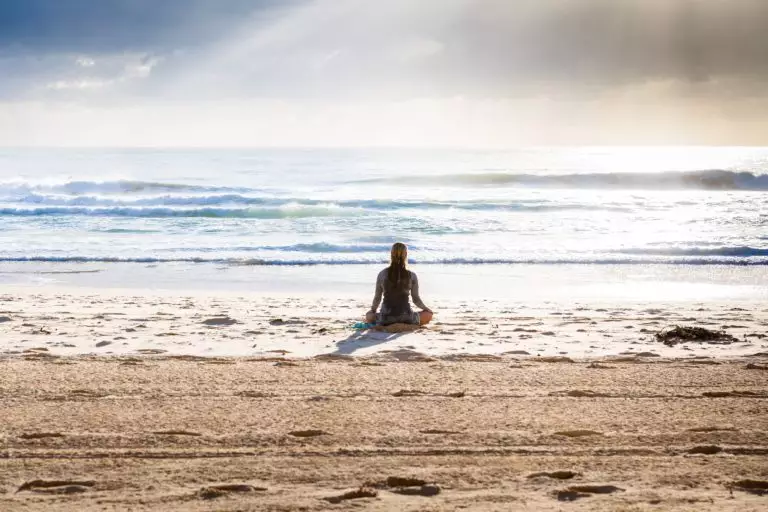
Find out all about your carbon footprint, and what you can do to reduce your impact.
Did you know that around a fifth of your body is made of carbon? It’s an element found in every living thing on the planet and when combined with oxygen it forms an invisible gas called carbon dioxide, or CO2. This greenhouse gas traps heat and energy that the Earth gets from the sun. Without CO2, all this energy would leak back out into space.
So, what’s the big deal about CO2 emissions in our atmosphere if the gas plays an important role? Well, today too much CO2 is being produced, which is causing the Earth to become warmer. We’re experiencing a man-made climate change and if it continues at its current alarming rate, the future of our planet is at risk.
Travelling by car, charging a mobile phone, eating a beef burger – everything we do creates CO2. Humans and animals, of course, breathe out CO2, however the problem is escalating now because in our modern world, more and more fossil fuels are being burned – things such as petroleum, coal and natural gas that were all formed in the Earth from animal or plant remains. This process produces a significant amount of CO2 emissions.
Reduce your impact
When people talk about a carbon footprint, they’re referring to how much a person’s life affects the environment. It’s not visible like a footprint in the sand, but everyone has one. The energy you use at home contributes to your footprint – the food you eat and clothes you buy have also, at some point along the line, contributed to CO2 emissions.
The good news is that you can help to decrease the amount of CO2 in our atmosphere just by making some wise everyday choices. You do need to use a computer for school projects, you might watch TV at night, and your home is a bus ride away from a sports club, but it is still possible to be carbon neutral and balance things you do that release emissions with a saving elsewhere.
Travel
With cars, buses, trains and aeroplanes all dependent on fuel, it’s no surprise that the travel sector is the main culprit of global carbon emissions, responsible for nearly one-tenth of greenhouse gases. Every time you’re driven somewhere in the car or you jump on a train, this adds to your carbon footprint. The greenest way to get from A to B is on foot, but sometimes walking isn’t really an option. Could you cycle instead? Travelling by bicycle is 10 to 20 times more carbon-efficient than the same journey in a car. As for flying, the footprint of a return flight from Sydney to Bali is almost what a person in Paraguay will generate in a year. Boarding a plane to a holiday destination may be fun, but you can also have a great time on a break closer to home – and you’d be helping to save the planet.
WHAT YOU CAN DO:
- Get on your bike. If it’s safe and practical, walk or cycle to school or a friend’s house. By not using a car your carbon footprint will be lower and it’s a good way to keep fit.
- Use public transport. If you’re travelling a distance, again avoid being driven in the family car. Take a bus or train and share the carbon footprint of the journey with other passengers.
- Enjoy a staycation. When discussing a family holiday, suggest a break in the country you live in. If you’re going overseas, encourage your parents to forgo a flight and look at alternative ways to travel.
Food
Food also has an environmental footprint, equating to a quarter of global emissions. Greenhouse gases are produced by growing, rearing, farming, processing, transporting, storing and cooking all the things you eat. Meat, particularly lamb and beef, is the worst offender – but eating dairy products, poultry, fish, seafood and eggs will also add to your carbon footprint. Buying local produce and growing your own veg reduces food miles – the distance products have to travel to a supermarket. Choosing organic seasonal food is environmentally friendly as well. However, regardless of what ingredients you use to make meals, households should try to reduce their food waste. One-third of all food produced ends up in the trash, creating millions of tonnes of greenhouse gas emissions across the globe.
WHAT YOU CAN DO:
- Swap meat for vegetables. You don’t need to become a vegetarian or vegan, but you can reduce the amount of meat that you eat. You’ll find plenty of great plant-based recipes online.
- Shop locally. Encourage your family to buy from local producers so fewer food miles are involved. Plan dishes that use seasonal ingredients.
- Cut down on takeaway. Eating takeaway food which is packaged and delivered to your home increases your carbon footprint, so consider preparing food at home instead.
Energy
Whether it’s using a hair straightener daily or charging a smartphone, homes across the world use an incredible amount of energy from fossil fuels. Although you won’t be responsible for your home’s electricity provider, families can cut their carbon footprint by switching to a retailer that scores highly on The Green Electricity Guide – energy providers to Australian households are ranked on their environmental performance. Wearing a jumper when it’s cold instead of turning up your air conditioner or heater can reduce your carbon footprint, too. Using energy-saving lightbulbs can lower the emissions by around 20 percent. And when households need to replace a washing machine or fridge, they can purchase energy efficient appliances. Do note, though, that upgrading an electronic device adds to your carbon footprint, so think twice before asking for a new phone. Apple claims that 80 percent of a new laptop’s footprint comes from manufacturing and distributing the product, not using it at home.
WHAT YOU CAN DO:
- Switch off lights and gadgets. Remember to turn off the light when you leave a room, and pull out the plug when an electrical device is not in use. Try not to leave a computer or TV on standby either.
- Keep showers short. Heating water uses energy, so shorter showers are best, and turn off the tap when you brush your teeth.
- Don’t fill the kettle. If you’re making a cup of tea, coffee or hot chocolate, don’t fill the kettle to the brim. To save energy, only boil as much water as you need.























